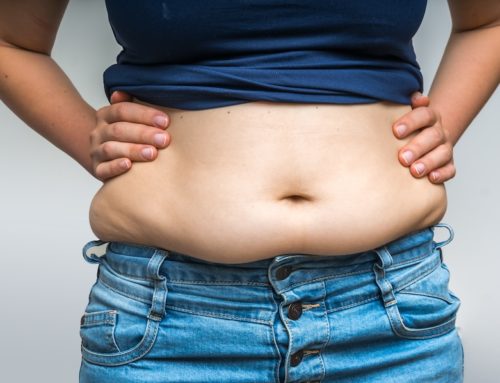Visceral fat is a type of fat that surrounds the internal organs in your abdomen. Sometimes you can’t feel it or see it. Visceral fat can exist even if your stomach is relatively flat. The phrase “thin outward, plump inside” is occasionally used to describe this. Visceral fat gives a person an “apple” shape or causes the belly to protrude. Additionally, it generates hormones and substances that may harm the body. The only way to determine how much belly fat you have is with a scan, which your doctor will only do for that purpose.
Researchers believe visceral fat produces more proteins that cause inflammation in your body’s tissues and organs and narrows your blood vessels. This can raise your blood pressure and lead to other issues. Any excess body fat harms your health, but visceral fat is more likely to increase your risk for significant medical problems than the fat below your skin (subcutaneous fat). Several diseases are closely associated with having too much body fat, including heart disease, Alzheimer’s, type 2 diabetes, stroke, and high cholesterol.
What is Fat?
Fat is deposited when you consume too many calories and engage in insufficient exercise. Due to their genetic makeup, some people choose to retain their body fat around their abdomen rather than on their hips. Age can alter where the body stores fat in women, and they will lose muscle mass and gain fat, particularly after menopause. Even if they do not gain weight, women are more likely to have extra visceral fat in their abdomen as they age.
Visceral fat in men can also grow due to genetics and aging. Alcohol consumption can increase abdominal fat in men as well. You don’t need to adhere to a specific diet or perform particular workouts to lose belly fat. Just stick to your routine to lose weight and get in shape.
How to keep the fat off?
Keep moving. Exercise can aid in losing both visceral fat and palpable subcutaneous fat. Exercise also helps you keep the weight off once you lose it through dieting. Everything counts. Take a stroll after dinner. Use the stairs and bike rather than drive. Aim for moderate aerobic exercise for at least 30 minutes daily.
It’s also crucial to maintain and grow your muscular mass. Exercise with weights, perform resistance exercises like sit-ups and push-ups or do yoga. Eat wisely. According to studies, having more calcium and vitamin D in your system may be associated with having less visceral fat. So eat plenty of leafy greens like spinach and collards. Dairy products like yogurt, cheese, and milk are also excellent choices, as are tofu and sardines.
Contrarily, some foods appear to promote belly fat. One is trans fat, which can be found in processed meals, deep-fried foods, dairy products, and meats. Other items sweetened with fructose include sodas, candies, processed baked products, and other foods. To avoid such components as “partially hydrogenated oils” or “high-fructose corn syrup,” read the labels carefully. Additionally, consume plenty of fresh fruit and vegetables, whole grains like oatmeal, and lean proteins like skinless chicken, fish, eggs, and legumes.
Visceral fat health hazards are a symptom of metabolic syndrome, a group of illnesses including hypertension, obesity, high cholesterol, and insulin resistance. Additionally, dementia, cancer, asthma, liver illness, gall bladder disease, gout, fertility issues, lower back discomfort, and osteoarthritis can all be brought on by having too much visceral fat in the abdomen.
Diet and weight loss are the best ways to minimize visceral fat. Compared to hip fat, visceral fat reacts better to diet and exercise. Additionally, regular exercise can prevent visceral fat from returning. Medication is another choice, although studies show it does not reduce visceral fat as effectively as exercise. Visceral fat cannot be removed by liposuction. You can lower your disease risk even when you cannot change your genetics, hormones, or age. Following a good diet, quitting smoking, cutting back on sugary drinks, getting adequate sleep, and engaging in aerobic, strength training, and other forms of daily activity.
Our upcoming sessions
Dr. Pavlovic uses the HD Body Contouring method to eliminate extra fat deposits on your body. It is a terrific way to reshape your body with minimally invasive liposuction, especially in regions that defy diet and exercise. Dr. Pavlovic can conduct HD Contouring on most of your body, right down to the tiniest fat deposits under your chin, in the back of your calves and ankles, inside or above your knees, and anywhere else. Your results will gradually become apparent in the weeks that follow your treatment. Your new shape will show as the fluids drain and the swelling decreases.
Patience is essential, but the wait is worthwhile since, at the same time, your collagen is working to help rebuild your skin to cover your new shape. Patients adore the results that HD Body Contouring produces, which has a 95% patient satisfaction rate. Don’t hesitate to get the best results you desire, or join us for a short educational 45–minute gathering where we will discuss Targeting Visceral Fat with injections on March 13, 2023, from 12:00 pm – 1:30 pm.







